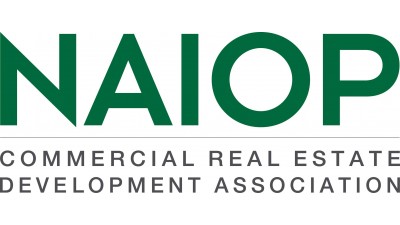Industrial Headed For Short-Term Pinch, Long-Term Gain

It’s no secret that industrial owners are more insulated from the current crisis than their peers in office, retail or hospitality. But projections from the world’s largest real estate services firm suggest that industrial real estate isn’t just going to survive the next six months, it will also thrive in the following year.
According to the Americas research team at CBRE, industrial vacancies will rise over the next two quarters, but drop below pre-coronavirus levels within the next year.
Long-term trends like automation, reshoring of manufacturing and a push to make the national economy more resilient to future crises should help foster a bright future for industrial players when the economy settles down.
“Even if we see some slowdown in the short term, we expect demand to pick up very quickly thereafter,” said Spencer Levy, chairman of Americas research and senior economic advisor at CBRE. “We’re going to see incremental demand for hundreds of millions of square feet of additional industrial space, which will drive development of new, more modern facilities.”
With most Americans stuck at home, online ordering is up 14%, driving demand for industrial space to operate last-mile logistics and distribution centers to ship goods to consumers’ doors.
Collections remained relatively strong for most industrial owners through the month of April, Levy said, but he noted that collections were weaker for owners of small-bay assets, which lack the large clear heights that modern logistics tenants demand. He said he expects collections to decline until June, when they may pick back up as economies reopen.
One of the brightest spots in industrial will be cold storage. As they stockpile and ship products directly to consumers, grocery companies need space to store fresh food and perishable goods.
This new pressing need for specialized warehouse space may help mitigate a slump in industrial demand, especially for more recently built assets, where space will almost certainly be snapped up immediately if it becomes vacant.
However, Levy said, we should not underestimate the pinch that industrial owners will feel in the very short-term. Small businesses are struggling to stay afloat during the pandemic. If local manufacturers, distributors and builders fold within the next few months, there is a good chance that they won’t come back, which will leave holes in industrial markets nationwide.
“The short-term is going to be a scary place for some owners and certainly for tenants,” he said. “The Small Business Administration has been doing a reasonably good job to keep as many of these local companies afloat as possible, but some of them won’t be able to survive.”

The holes left from these closures could cause pockets of high vacancy and valuation slumps in less established, secondary markets across the U.S., and for assets that are not in prime locations near ports and highways.
But Levy said the long-term view for industrial real estate is quite bright. Along with growing demand for distribution networks, he said he also foresees manufacturing returning to U.S. factories after decades of pushing production overseas.
Protectionist policies in the U.S. and abroad may speed the reshoring of manufacturing, but Levy said the real force will be the falling price of automation. It may be cheaper to produce products with machines in the U.S. than it will be to use large overseas labor forces, bringing in a need for industrial assets that can house light and heavy manufacturing.
The current crisis may also drive more institutional backing into industrial assets and funds, Levy said, as investors back away from retail, hospitality and other asset classes.
“The truth is, though, that trend was already happening,” Levy said. “Retail had already lost much of its institutional backing, and I think this will only accelerate that trend.”
Levy also expects American companies to start taking up more industrial space in a bid to be more prepared for the next global pandemic or crisis by storing facilities to stockpile critical supplies and equipment. He also predicted that public companies will soon be judged not only on their profitability and their commitment to environmental, social and corporate governance — so-called ESG scoring — but also on their contributions to national and global resiliency in the face of disaster.
“If anything was a failure during the pandemic, it was the lack of resilience to a shock, the fact that the richest country in the world didn’t have enough masks or food stockpiled to outlast this,” Levy said. “The coronavirus exposed the weakness of our ‘just-in-time’ manufacturing and delivery model.”
Levy will deliver the keynote remarks at NAIOP’s I.CON Virtual, an online industrial conference taking place from June 23-25.
This feature was produced by the Bisnow Branded Content Studio in collaboration with NAIOP. Bisnow news staff was not involved in the production of this content.

